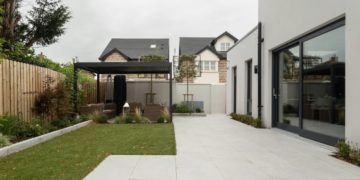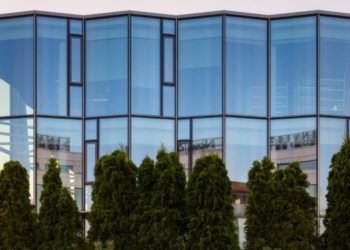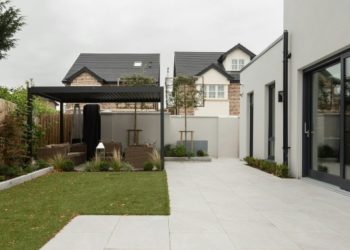Investing in property means understanding where the opportunities lie. As the demand for flexible living and working spaces grows, developments that combine residential and commercial uses have become increasingly popular. Findings from a recent survey of 250 UK landlords revealed that:
“As a percentage of their total square footage, on average, 36% of respondents’ office space is currently dedicated to flexible or coworking space. On average, they anticipate this to grow to 54% by 2030.”
Unlike traditional single-use properties, mixed-use investments can offer multiple income streams and greater long-term value.
While this type of property has been gaining attention, it remains underutilised by many investors. If your portfolio hasn’t yet ventured into mixed-use investments, it could be missing out on key growth opportunities. Diversifying into this sector allows you to tap into the benefits of both residential and commercial markets, balancing risk and reward in a way that’s hard to achieve with one type of property alone.
So, what are you waiting for? Keep reading as we dive into whether or not your property portfolio could benefit from a mixed-use investment property.
What Defines a Mixed-Use Investment Property?
To answer this question, in short, mixed-use properties bring together residential and commercial elements under one roof. These developments may range from simple setups, such as retail on the ground floor with apartments above, to more extensive combinations of office spaces, shops, and living areas. Why are they so appealing? Their growing appeal lies in offering convenient living and working spaces in a single location, meeting the modern demand for flexibility. In fact, the University College of Estate Management pointed out that:
“Mixed-use properties aren’t a new phenomenon, but in the wake of the housing crisis, greater awareness of sustainability and the impact of the pandemic, they’re growing in popularity. In the UK, mixed-use developments are in construction in every major city, while in the US, several major projects worth billions of dollars are already underway.”
So, what is the appeal of mixed-use properties for investors? The answer is simple: these properties can generate multiple revenue streams. Whilst these properties can potentially provide multiple revenue streams, it’s essential to ensure that planning permissions and zoning regulations align with your vision for the property. Securing the right tenants—whether commercial or residential—requires careful market research to ensure long-term occupancy and profitability. As with any investment, it is essential that you look at the potential investment from all angles – rather than focus on the possible financial gain.
Benefits of Adding Mixed-Use Properties to Your Portfolio
Circling back to the benefits of mixed-use properties, one of the main advantages is risk reduction. With residential and commercial tenants, your income doesn’t rely on one sector alone. If one type of tenant moves out, the other may still generate income, giving you a more consistent cash flow. This stability is crucial when market conditions fluctuate, as it balances the potential volatility of commercial or residential spaces on their own.
Moreover, mixed-use properties often see faster value appreciation than single-use developments. They respond to both residential and business demand, creating a unique appeal for tenants and investors alike. This adaptability ensures that you’re positioned for long-term financial growth.
Navigating the Market Demand for Mixed-Use Developments
As urban areas continue to expand, the demand for properties that cater to both living and working spaces is rising. Mixed-use developments are increasingly seen as the answer to this need, offering residents the convenience of having amenities, workspaces, and homes within close proximity. This shift towards urban living has created a strong market demand for these types of properties, making them a lucrative option for investors.
Understanding local market trends is essential when considering mixed-use investments. Not all locations will have the same level of demand for these developments, so it’s vital to assess potential growth areas carefully. Identifying regions with increasing urbanisation and commercial activity can help you find the right opportunities for your portfolio. As Assets For Life pointed out:
“Property investors who purchase houses in areas that are nearing completion of urban regeneration projects can sell them for a higher price. In fact, a study of property price growth in London’s regeneration areas reveals a consistent increase compared to the borough average, with properties near these zones experiencing a growth premium averaging 2.2% annually.”
How Mixed-Use Properties Balance Risk and Reward
Every investment carries its risks, but mixed-use properties offer a balanced approach by diversifying income sources. Having both commercial and residential tenants means that if one sector experiences a downturn, the other can still generate revenue, providing greater financial stability. For instance, if retail businesses struggle due to economic changes, the residential units might still provide consistent income.
Balancing this risk-reward factor requires careful tenant management. The success of a mixed-use property depends heavily on finding the right combination of tenants that complement each other, ensuring that both sectors of the property thrive. By focusing on this balance, investors can reduce their exposure to market fluctuations.
The Role of Financing in Securing Mixed-Use Investments
Financing plays a crucial role in unlocking the potential of mixed-use properties. Securing the right type of financing can make a significant difference in your investment’s profitability. Investors often need to consider specific loan products that cater to semi-commercial developments, as these properties don’t always fit neatly into traditional residential or commercial mortgage categories.
This is where tailored financial products, such as semi-commercial mortgage options, come into play. These loans are designed to support properties that feature both residential and commercial units, giving investors flexibility in securing funds. Working closely with lenders who understand the intricacies of mixed-use investments ensures you get the best terms and financial structure to maximise your returns.
Maximising Returns: Strategies for Mixed-Use Investments
Maximising the potential of mixed-use properties requires a well-thought-out strategy. One of the key ways to achieve strong returns is by ensuring a complementary mix of tenants. For instance, having residential units paired with essential businesses—such as grocery stores, cafes, or fitness centres—can drive demand for both commercial and residential spaces. This creates a community-like atmosphere, making it more attractive to long-term tenants.
Additionally, paying close attention to the property’s location can impact profitability. Areas with strong foot traffic and proximity to public transportation tend to command higher rental prices, both for commercial and residential tenants. Keeping an eye on urban development trends can help you identify the best locations for mixed-use investments and ensure consistent demand over time.
Exploring Long-Term Growth in Semi-Commercial Investments
Mixed-use properties offer long-term growth potential, especially in urban areas experiencing redevelopment or increased commercial activity. By integrating both commercial and residential spaces, these properties can maintain value across different economic conditions. As demand for flexible living and working environments grows, mixed-use developments are likely to continue appreciating in value, providing both rental income and capital gains.
Investors should focus on areas where future urban development is planned, as these regions typically see higher demand for mixed-use spaces. This ensures sustained rental income and opportunities for property value appreciation over time.
Building a Diversified Property Portfolio with Mixed-Use Spaces
Incorporating mixed-use properties into your portfolio adds an extra layer of diversification. Rather than relying on a single type of property, mixed-use developments offer exposure to both the residential and commercial sectors. This helps reduce the risk associated with market fluctuations, as different tenant types can help stabilise cash flow during periods of economic uncertainty.
Investors can further diversify by selecting mixed-use properties in different geographical areas or choosing developments with varying commercial elements—retail, office, or hospitality. By doing so, you enhance your portfolio’s resilience and increase its potential for growth.
Is Your Portfolio Future-Ready? The Value of Semi-Commercial Real Estate
Looking ahead, the demand for properties that blend residential and commercial spaces is expected to increase. Shifts in how people live and work, especially in urban centres, make semi-commercial properties a smart choice for investors. These developments cater to changing market dynamics, where flexibility and convenience are key drivers of demand.
Assessing whether your portfolio is ready for the future involves considering how mixed-use investments fit into your long-term strategy. Are you capitalising on the growing trend towards flexible living and working spaces? If not, it may be time to explore semi-commercial mortgage options to make these investments a reality.
Ultimately, mixed-use investments present a powerful opportunity for property portfolios seeking long-term growth and stability. By diversifying income streams and adapting to market trends, investors can position themselves to benefit from the rising demand for flexible, urban developments.














































































